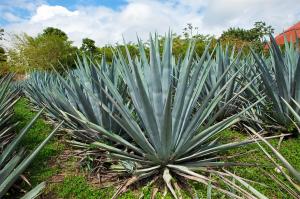What Causes Tomato Plant Leaves to Turn White?
Tomato plants are a staple in many gardens and are beloved for their juicy, flavorful fruits. However, it can be alarming when the leaves start to change color, turning a pale, almost white color. There are a variety of reasons why tomato plant leaves may become white, ranging from pests to nutrient deficiencies.
Overexposure to Sunlight
Tomato plants that are overexposed to sunlight can suffer from sunscald, a condition where the leaves, stems, and fruits become damaged due to excess UV rays. This can cause the leaves to turn white, as if they have been bleached. To prevent this, it is important to make sure your tomato plants are getting the right amount of sunlight. They need at least six hours of direct sunlight each day, but too much can be harmful.
Fungal Diseases
Fungal diseases are a common cause of white tomato leaves. One of the most common is powdery mildew, a fungal infection that causes a white, powdery substance to appear on the leaves. This usually occurs in warm, humid conditions, and can be treated with a fungicide. Another fungal disease that can cause white spots on leaves is leaf spot, which is caused by the fungus Septoria lycopersici. This disease usually starts as brown spots that eventually turn white, and can be treated with a copper fungicide.
Nutrient Deficiencies
If your tomato plants are not getting the right nutrients, their leaves may turn white as a result. The most common nutrient deficiencies that cause white leaves are nitrogen, magnesium, and iron. Nitrogen is important for leaf growth and chlorophyll production, so if your tomato plant is lacking in nitrogen, its leaves will turn pale and almost white. Magnesium is essential for chlorophyll production, while iron plays a role in photosynthesis. To fix these deficiencies, you may need to fertilize your plants or add compost or other organic matter to the soil.
Pests
Several pests can cause damage to your tomato plants, leading to white leaves. One of the most common is the tomato fruitworm, which eats the leaves and stems of the plant, causing them to turn yellow or white. Another pest that can cause white leaves is the whitefly, a tiny insect that feeds on the sap of the plant. Whiteflies can be difficult to control, but using an insecticide or introducing natural predators like ladybugs can help.
Solutions
If your tomato plant leaves are turning white, it is important to identify the underlying cause in order to treat it effectively. Depending on the cause, you may need to adjust the amount of sunlight your plants are getting, treat them with fungicides or pesticides, or add nutrients to the soil. In some cases, you may also need to prune your plants or provide additional support to promote healthier growth. With the right care and attention, your tomato plants will recover and produce a bountiful harvest.

 how many times do yo...
how many times do yo... how many planted tre...
how many planted tre... how many pine trees ...
how many pine trees ... how many pecan trees...
how many pecan trees... how many plants comp...
how many plants comp... how many plants can ...
how many plants can ... how many plants and ...
how many plants and ... how many pepper plan...
how many pepper plan...































